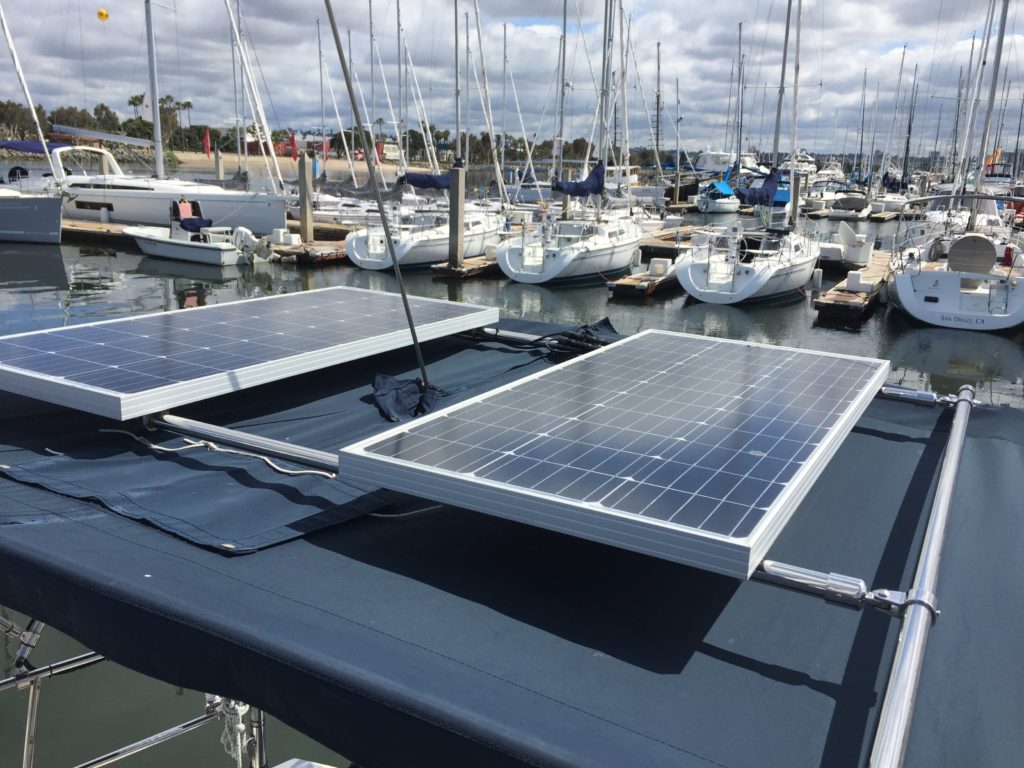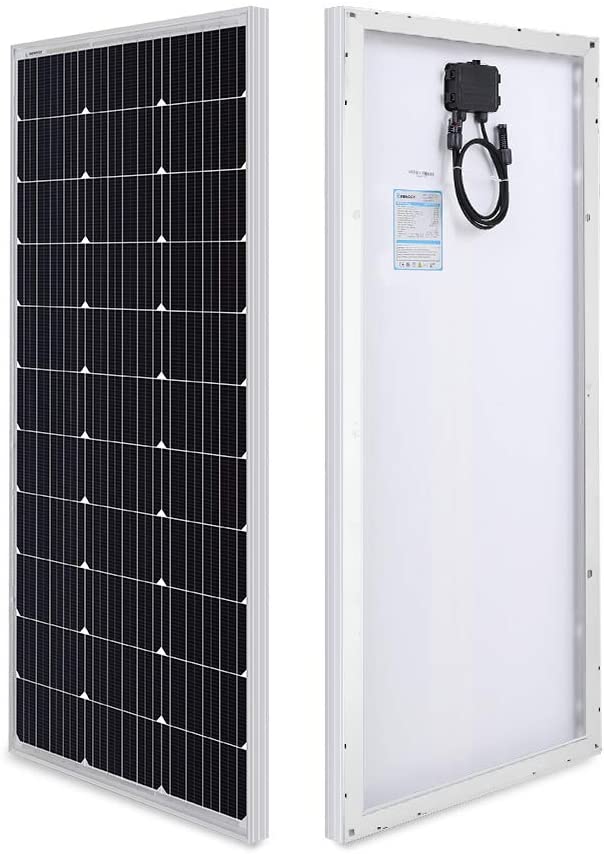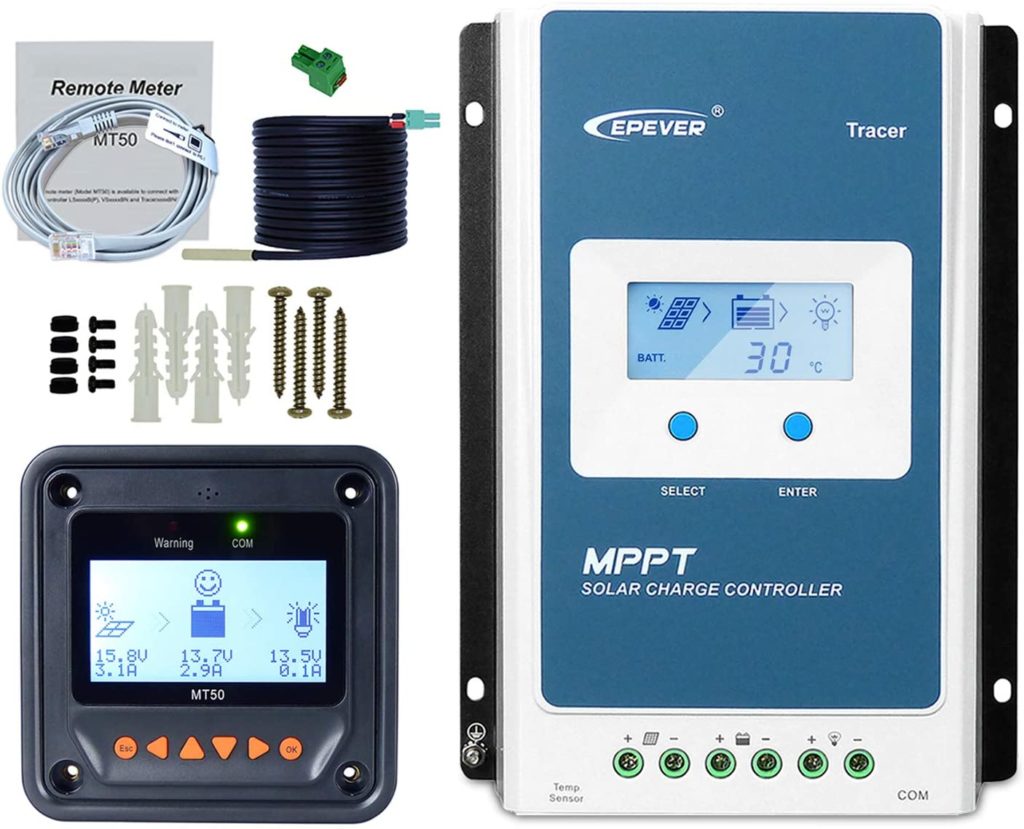Intro
After upgrading our electronics and batteries, we wanted to make sure that we could keep our new house batteries topped up while sailing, even when running the fridge, electronics, and auto-pilot. The obvious answer was to add solar panels.
Parts
I found a nice, high-quality panel that would fit easily on top of the bimini, with one panel on each side of the backstay.
I also wanted to get the maximum charging efficiency out of the panels, so I chose an MPPT controller. To keep costs down, I selected the 30A version of the controller, which would more than cover the 2 100W panels.
Mounting
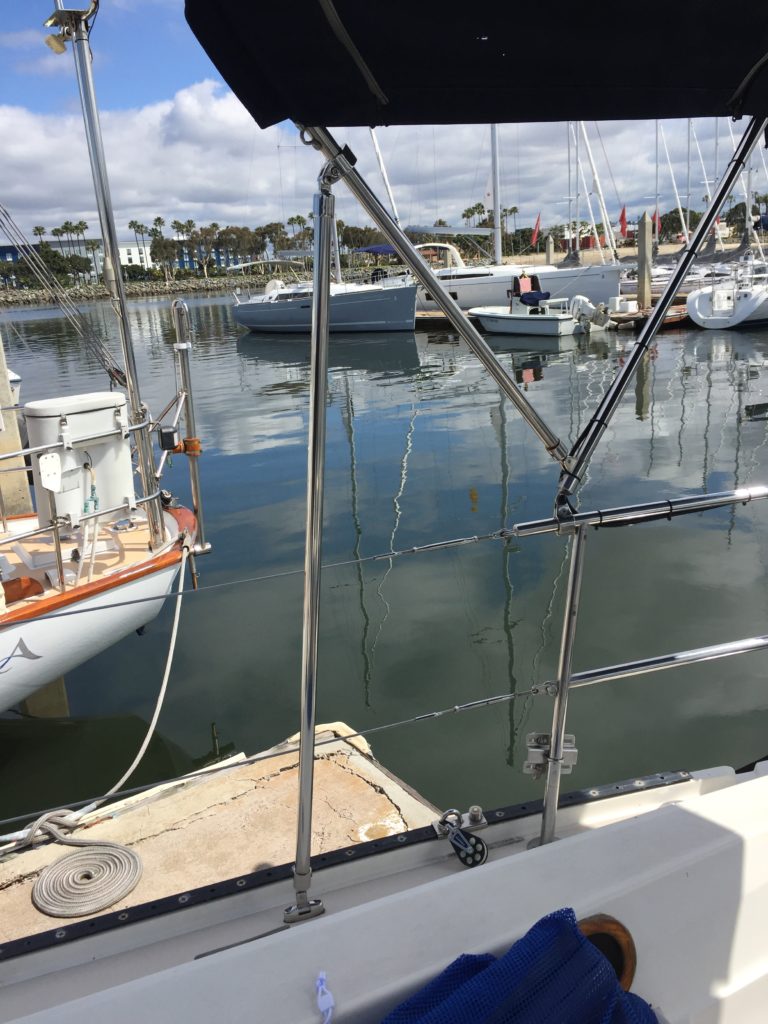
To keep cost and complexity to a minimum, I decided to build a rack on top of the existing bimini to mount the panels. First I added support bars to help support the existing bimini frame.
Then I added fore-aft bars that mount directly on top of the bimini bows. For now, they go over the top of the existing canvas, but when we replace the canvas, we will add notches to go around the supports. With these bars in place, I added crossbars to actually mount the panels.
To mount the panels, I ordered clamping U-bolts from McMaster-Carr, and used them in existing holes in the panel frames.
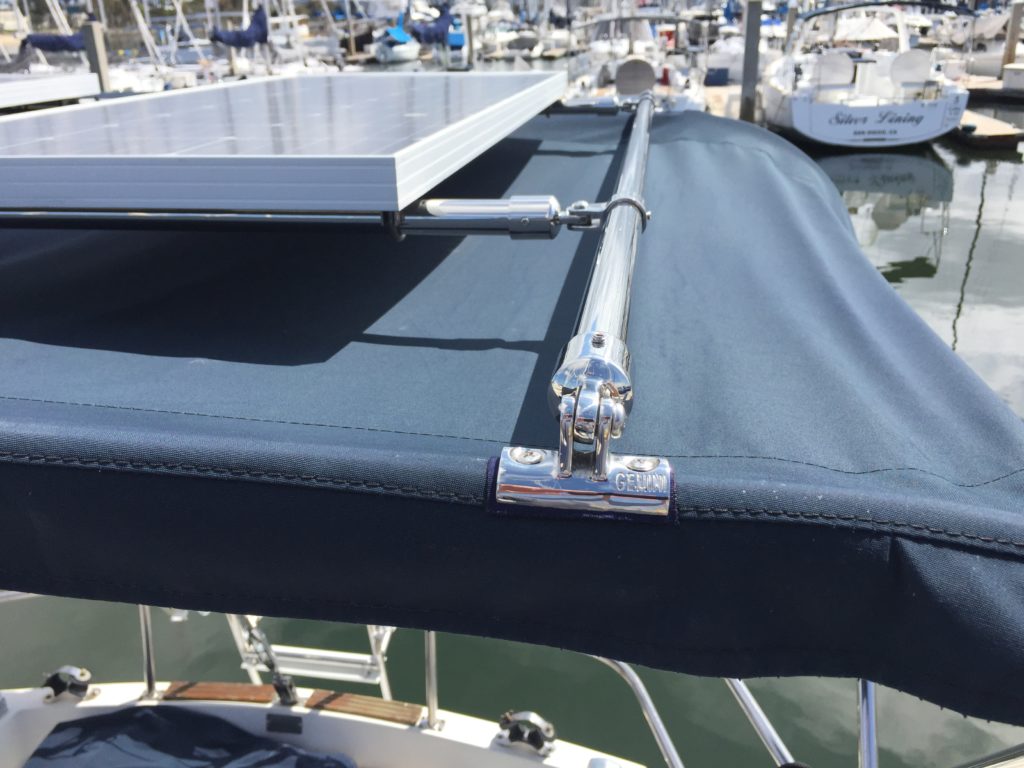
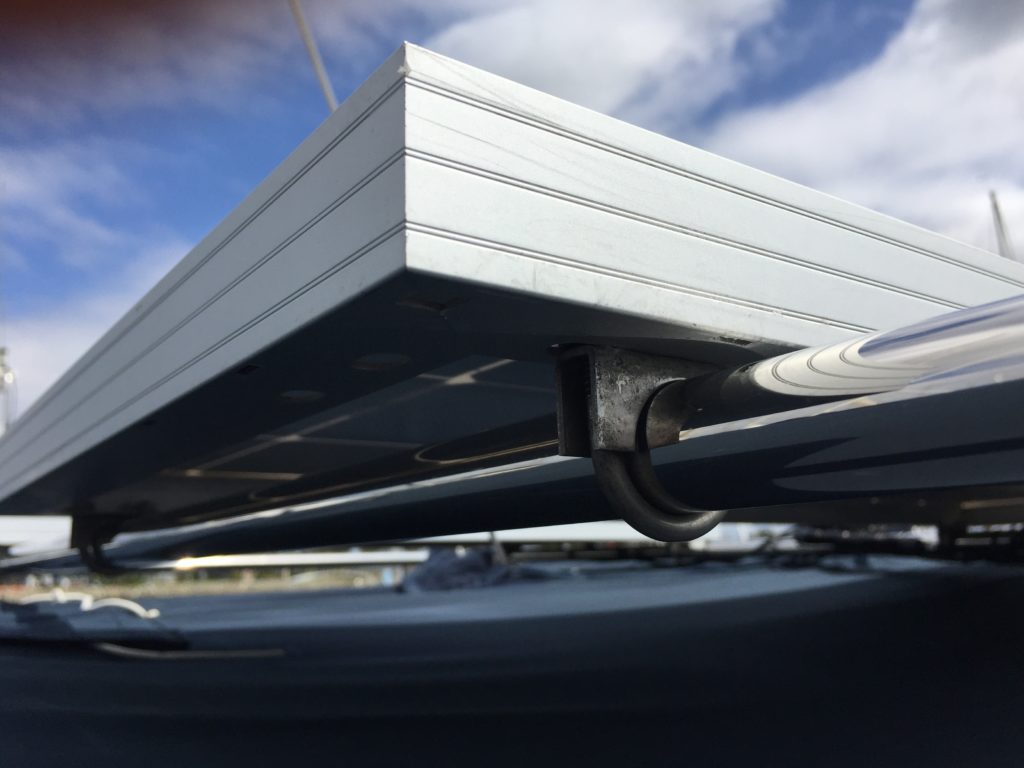
Controller and Wiring
I mounted the controller and remote panel on the forward bulkhead of the aft cabin, right behind the nav station area.
In addition to the battery temp monitor that came with the controller, I also added two 30A breakers for the panel and the battery connections. This would allow me to safely isolate the controller if needed, and would also add over current protection to the high-amperage cables. See the DC Power page of the electrical schematics to see how the solar fits into the overall electrical system.
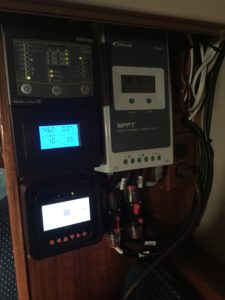
Results
During peak-sun times, the controller will put out about 13A at 12.9V. This is more than enough to keep up with all of our power draws during the day. It is not enough to fully recharge the batteries after being off shore-power over night, so we later added more panels.
